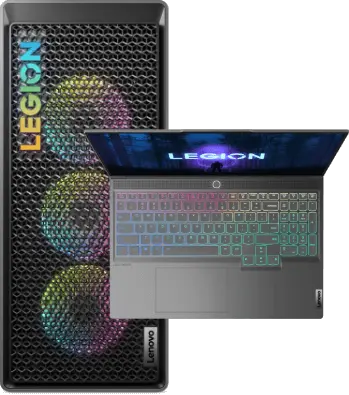Be Heard by Your Team—or Your Fans
A gaming microphone might not be the first thing you think about when buying accessories for your gaming rig. But it's worth considering. Whether you're a streamer, content creator, or just love gaming, a top-notch gaming microphone can make your experience even better.
Sound is a big deal in the gaming world, right? From those atmospheric sounds that pull us into the game world to those crucial in-game alerts—sound is key. And when it comes to recording or streaming your games for others, a good gaming microphone ensures you'll be heard loudly and clearly.
Do I Need a Gaming Microphone for Gaming?
Now, you might be thinking, "I've got a gaming headset with a built-in mic. Do I really need a separate gaming microphone?" Well, while those built-in mics do their job, they often can't match the audio quality and accuracy of a dedicated gaming microphone.
A top-tier gaming microphone captures all the little details in your voice and delivers game sounds with pinpoint accuracy. This can make a huge difference, especially in team-based games where communication is everything. Plus, a dedicated microphone generally means better audio quality, making multiplayer gaming sessions more immersive and fun for everyone.
Benefits of a Gaming Microphone
Besides enhancing your gaming experience, a high-quality gaming microphone has some other cool perks. For streamers and content creators, clear audio is a must. Your audience needs to hear what you're saying without any annoying background noise. A good gaming microphone with noise cancellation features can help with that.
Better communication is another big plus. In multiplayer games, being able to clearly communicate with your team can be the difference between an epic win and a crushing defeat. With a good gaming microphone, your commands and strategies are loud and clear, making sure everyone on your team is in sync.
Different Types of Gaming Microphones
Alright, let's talk about the different types of gaming microphones out there. There are a bunch to choose from, each with their own unique features and benefits. Let's break it down:
- USB Microphones: These bad boys are the 'plug and play' champs of the mic world. Super user-friendly — just plug them into a USB port on your device, and voila, you're set. They work with most devices and offer decent sound quality, making them a top pick for newbies or casual gamers. Plus, some USB mics even come with cool features like volume controls, mute buttons, and headphone jacks for real-time monitoring.
- XLR Microphones: If you're chasing top-of-the-line audio quality, XLR microphones may be your best bet (they're a big hit with professional broadcasters and streamers). These mics connect to an audio interface using an XLR cable, which then hooks up to your computer. It can be a bit more complicated, but it gives you a ton of control over your audio and usually delivers superior sound quality. But they're typically pricier than USB mics and need the extra gear mentioned above, so they might not be ideal for beginners.
- Condenser Microphones: These mics are the kings of capturing detailed, high-quality sound. They're awesome at picking up vocal nuances, making them perfect for streaming, podcasting, and voiceovers. Condenser mics are sensitive and capture a wide range of frequencies, but they also pick up a lot of background noise. They work best in quiet, controlled environments.
- Dynamic Microphones: If you're gaming in a noisy room, a dynamic microphone could be your best buddy. These mics only pick up sound that's directly in front of them, making them great at isolating your voice from background noise. They're also tough and can handle loud noises, so if you tend to get loud during intense gaming sessions, a dynamic mic won't distort your voice.
- Shotgun Microphones: These microphones have a super directional pickup pattern, meaning they capture sound from a very specific area (in front and to the sides of the mic), while rejecting sound from other directions. This makes them great for situations where you want to isolate your voice from a noisy environment. However, they're generally more suited to film and video production than gaming.
- Lavalier Microphones: Also known as lapel mics, these tiny microphones clip onto your clothing and are great for hands-free operation. They're commonly used in broadcasting and presentations. For gaming, they can be a good choice if you move around a lot while you play or if you don't want a bulky microphone cluttering your setup.
Remember, the best microphone for you depends on what you need, where you're gaming, and how much you're willing to spend. Do some research, check out reviews, and think about what features matter most to you before you make your decision.
Choosing the Right Gaming Microphone for You
When it comes to picking a gaming microphone, there are a few things to consider. The connection type is a big one – USB microphones (see above) are super easy to use, while XLR microphones offer better audio quality but need some extra gear.
The directional pattern of the microphone is also important. Some microphones pick up sound from all directions (omnidirectional), while others only pick up sound from one direction (unidirectional or cardioid).Other things to think about include the microphone's frequency response, sensitivity, and whether it's compatible with your gaming platform. It's worth doing a bit of research to understand these features so you can find the best microphone for your needs.
Gaming Microphone Customization Options
A lot of gaming microphones come with customization options to make your audio experience even better. Things like pop filters can help reduce plosive sounds, while shock mounts can minimize vibrations. Boom arms let you easily adjust the microphone's position, and gain control lets you tweak the microphone's sensitivity. Some microphones even have mute buttons for quick and easy muting.
Let's look at these customization options in more detail:- Pop Filters: These guys are designed to reduce the impact of explosive sounds. These are hard consonant sounds like “p” or “b” that cause a rush of air that the microphone picks up as a loud thud. A pop filter placed between you and the mic can dramatically reduce this.
- Shock Mounts: Have you ever bumped into the table or desk your mic is on? The vibration travels up the mic stand and into the mic itself, causing a rumbling noise. Shock mounts hold your mic and isolate it from these vibrations.
- Boom Arms: These are adjustable arms that hold your mic. They allow you to easily change the position of the mic, making sure it's always at the optimal distance from your mouth.
- Gain Control: This is a feature that lets you adjust how sensitive the mic is to sound. Too high and the mic will pick up every little noise, too low and it might not pick up your voice clearly.
- Mute Buttons: Sometimes, you need to quickly mute your mic, like if you're streaming and someone walks into the room. A mute button allows you to instantly cut the sound from the mic.
How Much Do Gaming Microphones Cost?
Gaming microphones come in all sorts of price ranges, from budget-friendly options to mid-range and high-end models. Here's a breakdown of what you can expect at different price points:
- Budget-friendly gaming microphones (under $100): These mics are great for beginners or casual gamers. They offer decent audio quality and basic features, providing good bang for your buck.
- Mid-range gaming microphones ($100 - $200): These mics offer better build quality, superior audio clarity, and additional features like multiple pickup patterns and gain control. They're a good choice for serious gamers, budding streamers, or content creators who want to step up their audio game without breaking the bank.
- High-end gaming microphones (over $200): These mics are for the pros. They deliver exceptional audio quality and come loaded with advanced features and customization options. They're often used by professional streamers, podcasters, and content creators who require top-notch audio for their work. While these mics come with a higher price tag, they're an investment that can significantly enhance the quality of your content.
Conclusion
A good gaming microphone is a solid investment for any gamer, streamer, or content creator. It can seriously improve your audio quality, enhance your gaming experience, and ensure clear communication with your team or audience.
When choosing a gaming microphone, think about your specific needs and budget. Do some research on the different types of microphones and their features, such as connection type, directional pattern, frequency response, and sensitivity. And don't forget to check out the customization options.













